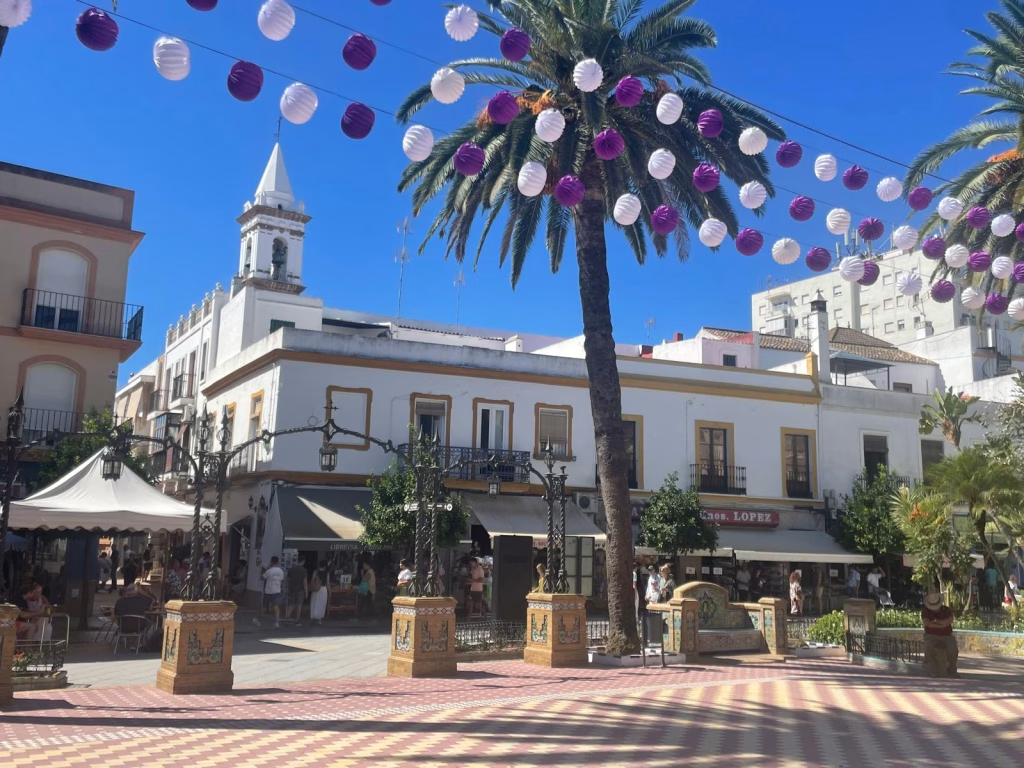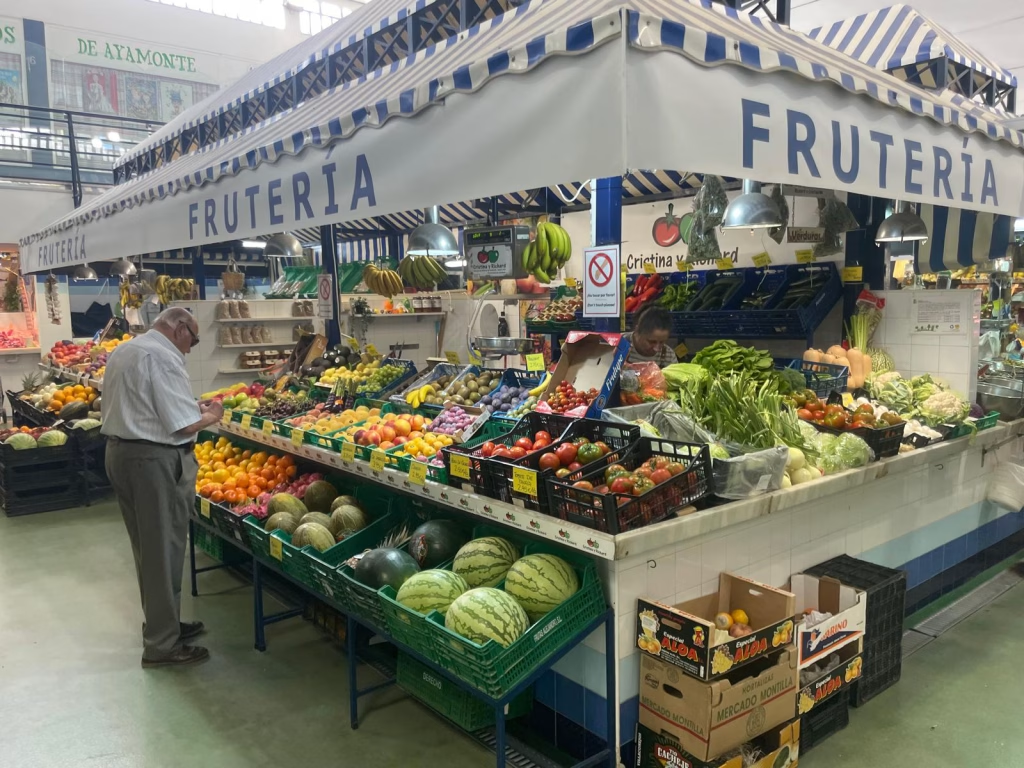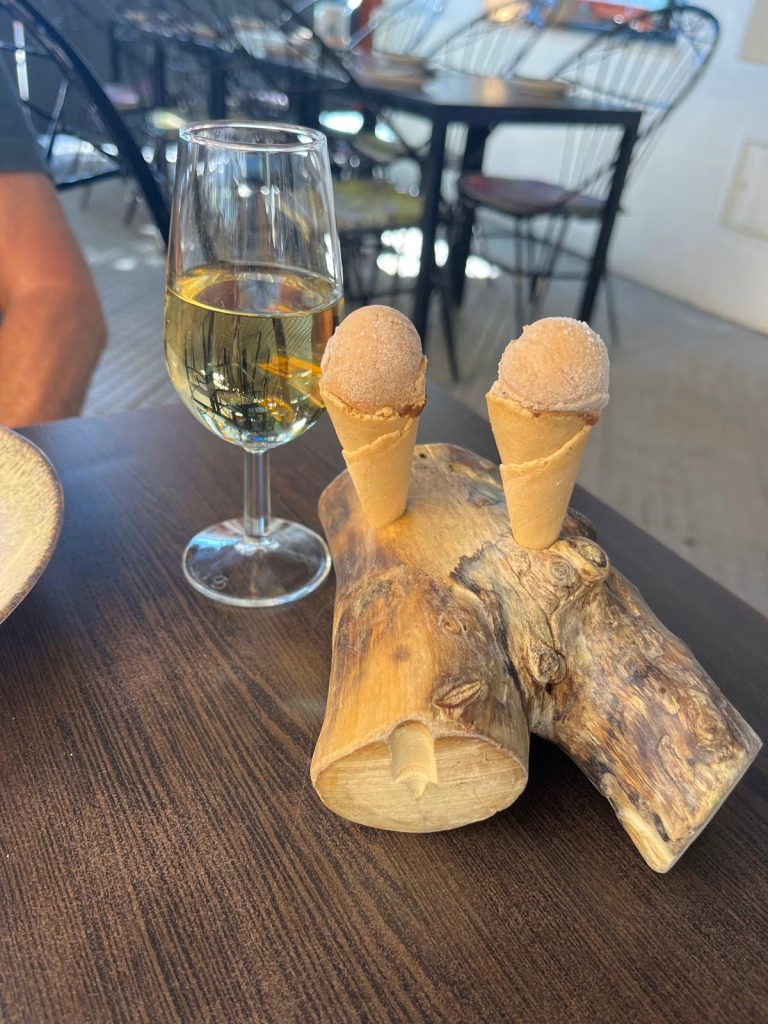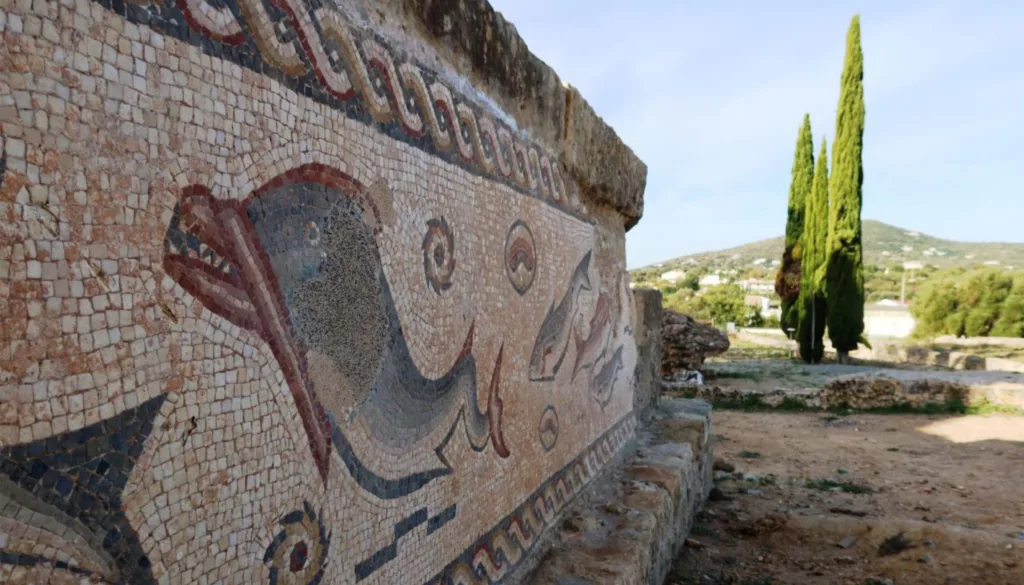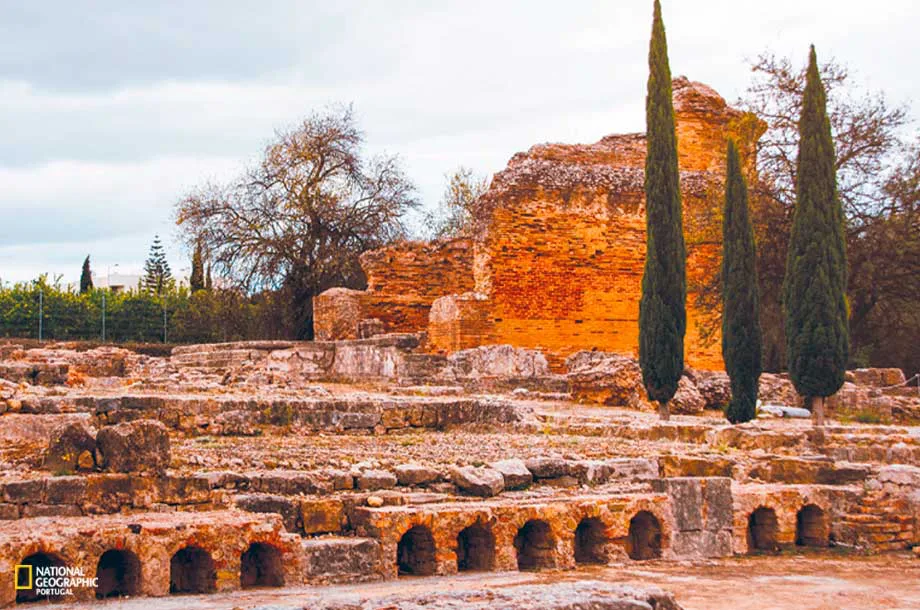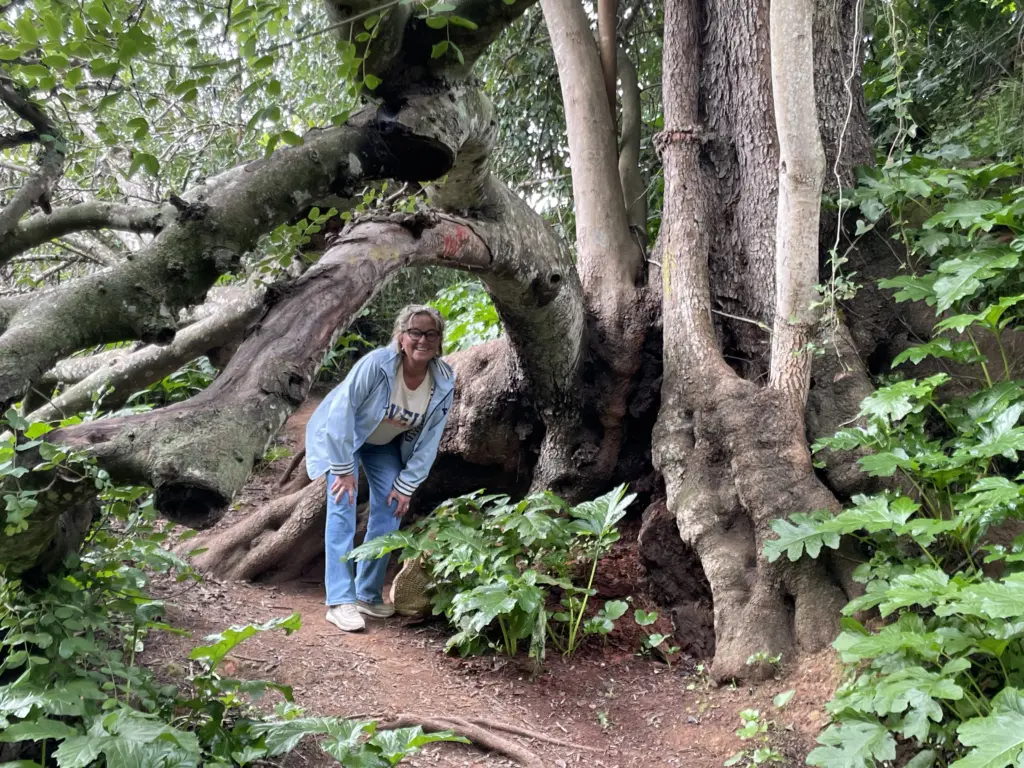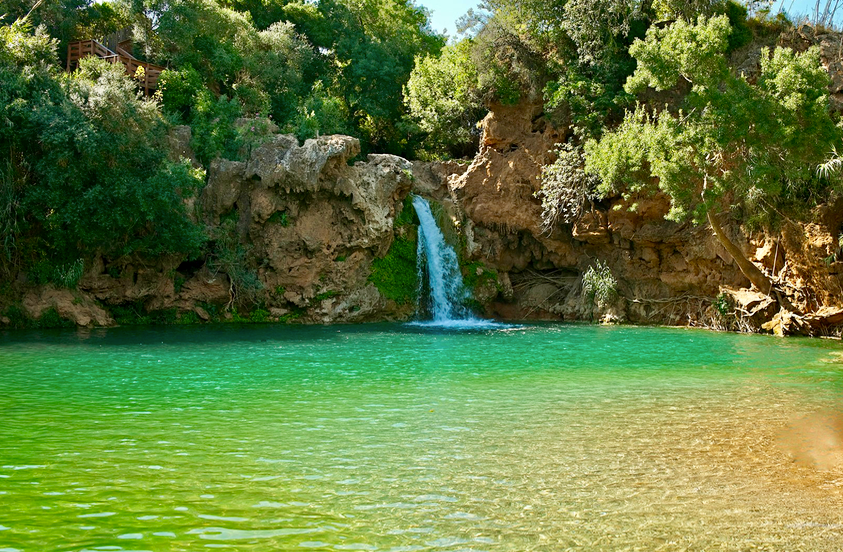Sometimes the best adventures are the easiest ones. From Tavira, you can hop on a little train, glide across a river, and—just like that—you’re in Spain. Ayamonte may only be a short journey away, but it feels like you’ve slipped into another world. Think Andalusian plazas, tapas bars, and that unmistakable Spanish buzz.
Here’s how to do it without stress, car keys, or Google Maps yelling at you.
🚆 Tavira to Vila Real de Santo António by Train
Start your morning with the train from Tavira to Vila Real de Santo António . It’s a short, scenic ride—just under 30 minutes—and tickets hover around €3. Simple, no fuss, and you’ll be in Vila Real before your coffee’s even cooled.
(Pro tip: check train times here)
⛴️ Vila Real to Ayamonte by Ferry
From Vila Real’s station, it’s a quick stroll to the ferry terminal. And this is where the fun begins—the little ferry across the Guadiana River feels like a rite of passage. In 15 minutes, you’re stepping off the boat into Ayamonte , Spain.
The crossing costs just a couple of euros, but the view? That’s priceless. Watch the Portuguese side slowly fade behind you as Spain comes into focus. (Check ferry times here: Ayamonte ferry info)
✨ One little detail to keep in mind: Spain is on a different clock. When you step off the ferry in Ayamonte, it’s suddenly an hour later. Handy if you’re hungry—lunch comes quicker than expected. Just remember to adjust your watch so you don’t miss the ferry back to Portugal.
🌿 What to See in Ayamonte
Ayamonte is compact enough to explore on foot, which is perfect after a lazy river crossing.
- Plaza de la Laguna — the heart of town, buzzing with cafés and chatter.
- Iglesia de Nuestra Señora de las Angustias — quiet, beautiful, and very Andalusian.
- Mercado de Abastos — peek into daily life with stalls of fresh fish, jamón, and fruit.
Honestly, half the joy is just wandering. Whitewashed alleys, tiled facades, the slow rhythm of Spanish life—it all feels wonderfully different from Tavira, yet comfortingly close.
🍴 Where to Eat in Ayamonte
This is Spain, so food is non-negotiable. Pull up a chair, order a glass of tinto de verano , and don’t rush it.
Try:
- Pescaito frito — crispy fried fish, a local favourite.
- Jamón Ibérico with pan con tomate — simple but unforgettable.
- Or go bold with a seafood rice if you’ve got time to linger.
Restaurants cluster around the plazas and the riverfront, so you won’t have to look far. And trust me, even the “random little bar on the corner” will probably serve you something memorable.
🍷 My Favourite Lunch Spot in Ayamonte: LPA
If there’s one place in Ayamonte that locals whisper about, it’s LPA (La Puerta Ancha) . You’ll recognize it by the tall wooden door —slightly mysterious from the outside, but once inside you’ll find a bright, elegant space that feels worlds away from the bustle of the plaza.
The kitchen here loves to surprise. You might start with their playful foie gras “ice cream cones” or the quirky calamari croquetas —a clever nod to the Bitterballen of Dutch tapas lovers. From there, move on to bigger plates like grilled octopus with silky potato purée , tuna tartare with avocado , or the melt-in-your-mouth iberico pork cheeks slow-cooked in red wine . And whatever you do, save room for dessert—their homemade cheesecake is legendary.
It’s modern Spanish cooking at its best: creative without being fussy, comforting without being boring. Pair it all with a crisp Albariño or a bold Rioja or even a local Manzanilla Fino and you’ll probably wish the ferry back ran a little later.
Book in advance.
⏱️ Sample Itinerary
- 08:06 — Train from Tavira to Vila Real de Santo António
- 08:30 — Stroll to the ferry dock
- 08:45 — Ferry to Ayamonte
- 09:00–12:30 — Wander, sightsee, shop the market
- 12:30 — Long Spanish lunch (jamón, wine, repeat)
- Afternoon — Explore a little more, ferry back, train home
By 4 PM you’re back in Tavira with a sun-kissed glow and stories to tell.
✨ Why This Day Trip Works So Well
Because it’s easy. No car. No stress. Just train, ferry, tapas —and you’ve ticked off two countries in one day. It’s the kind of trip where you lean back, breathe in the Andalusian air, and think: why didn’t I do this sooner?
📌 Quick Links
- Train Tavira – Vila Real de Santo António : see times & tickets
- Ferry Vila Real – Ayamonte : check schedules
So, next time you’re in Tavira and craving a dash of Spain, don’t overthink it. Ayamonte is just around the corner—by train, by ferry, and by appetite.
